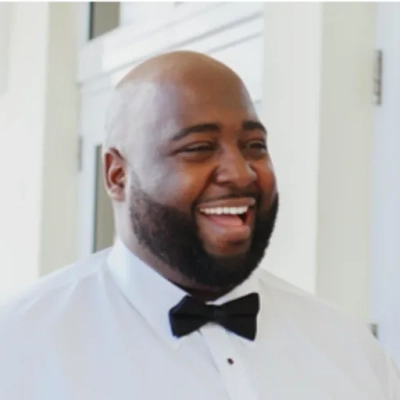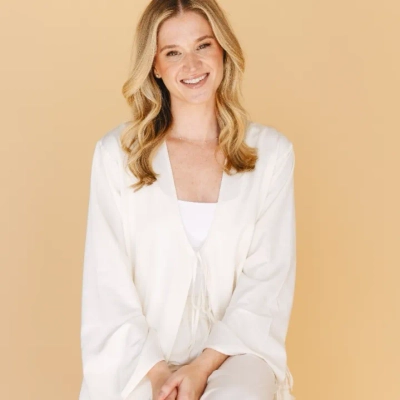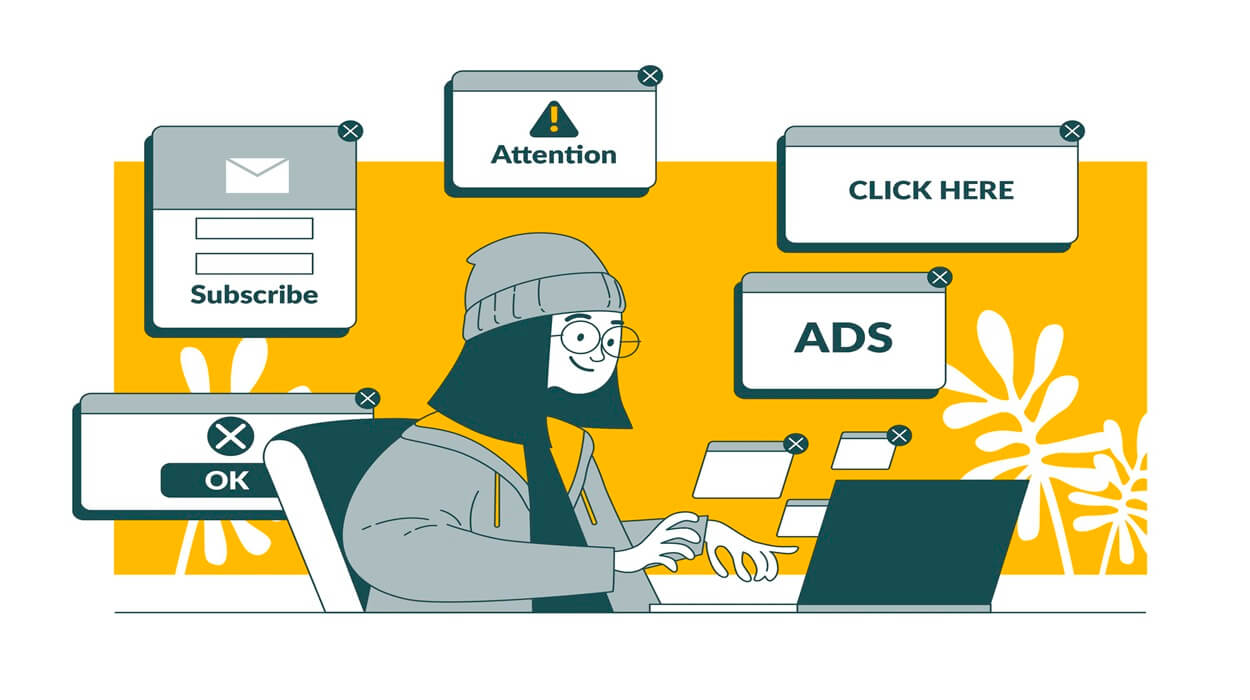Launching a new product in today’s competitive digital marketplace requires more than just a compelling offering—it demands a well-structured and strategic marketing approach. PPC advertising strategies have emerged as one of the most effective tools for gaining immediate visibility, capturing qualified leads, and driving measurable results. However, without the right strategy in place, businesses may find themselves investing heavily without a clear return.
This blog explores proven PPC advertising strategies specifically tailored for new product launches. Drawing on expert insights, we aim to simplify the complexities often associated with digital advertising and provide practical, easy-to-implement tactics. From accurately testing market demand to building multi-tiered campaigns and targeting niche consumer segments, each strategy is designed to optimize your ad spend while maximizing your product’s exposure.
Whether you’re a startup introducing your first product or an established brand expanding your portfolio, the following strategies will help lay a strong foundation for your PPC campaigns. By focusing on precision, adaptability, and audience relevance, you can ensure your new product reaches the right people at the right time—driving higher engagement, better click-through rates, and ultimately, successful market penetration.
1. Test Demand with Google Ads
When I first launched an SEO audit service, I used Google Ads to test demand and attract early clients. The goal wasn’t just to get clicks but to validate messaging and understand which pain points resonated most with potential customers. I kept the ad copy highly targeted–highlighting issues like “traffic drop?” or “ranking stuck on page 2?”–and paired that with a clean landing page offering a free mini audit as the lead magnet.
I also used keyword targeting focused on bottom-of-funnel search terms like “SEO site audit service” and “fix Google ranking issues.” To keep costs down, I ran ads during business hours only and set up negative keywords to filter out DIY searchers. One big takeaway was that small tweaks in the ad copy–like using industry-specific language or referencing common platform issues (e.g., “Shopify SEO audit”)–made a huge difference in click-through and conversion rates. The campaign not only brought in early clients but also gave me messaging clarity that I later used across my organic content and emails.
 John Reinesch
John Reinesch
Founder and Marketing Specialist, Asset Growth
2. Use Multi-Layered PPC Strategy
When launching a new product, PPC can be a game-changer if done right. I recently helped a client introduce a SaaS tool using a multi-layered PPC strategy. We started with Google Search Ads, targeting high-intent keywords to capture users already searching for solutions. To complement this, remarketing ads on Google Display Network and social media (Facebook & LinkedIn) ensured we stayed visible to potential customers who had interacted with the landing page but hadn’t converted.
We also ran competitor targeting campaigns, bidding on keywords related to alternative tools, offering a compelling value proposition to users already considering similar solutions. To maximize conversions, we A/B tested ad copies, CTAs, and landing page designs, ensuring we aligned messaging with user intent.
One of the biggest takeaways was the power of structured audience segmentation–we optimized campaigns by separating cold audiences from warm leads and tailoring ads accordingly. Additionally, leveraging automated bid strategies helped optimize costs while maintaining a strong conversion rate.
The result? A 35% lower cost per acquisition (CPA) than industry benchmarks and a consistent 5x ROAS (Return on Ad Spend) within the first three months. The key lesson here is that PPC success isn’t just about budget–it’s about targeting the right people with the right message at the right time.
 Priyanka Prajapati
Priyanka Prajapati
Digital Marketer, BrainSpate
3. Target Micro-Niches for High CTR
Here’s how we launched a premium meditation app using PPC last year – the gritty details most case studies won’t tell you:
We started by reverse-engineering competitor weaknesses through spy tools – we discovered most ads targeted generic “stress relief” but missed specific pain points like “how to meditate with tinnitus.” Entire campaign around these underserved micro-niches with ads like “Meditation When Your Ears Won’t Stop Ringing (3-Minute Solution)” – which achieved a 9.2% CTR, crushing the industry 3% average.
We ran simultaneous A/B tests on YouTube (15-second demo videos of our tinnitus meditation) and Google Search (problem/solution ad copy), but the game-changer was layering on Reddit ads in r/tinnitus – that subreddit alone drove 22% of our first-month conversions at 1/3 the CPA of Google. We learned the hard way that Apple’s privacy updates severely impacted our iOS remarketing, so we pivoted to collecting emails through a “Free 3-Day Zen Audio Challenge” that gave us first-party data to work around tracking limitations.
Key takeaways? 1) Micro-targeting specific suffering beats broad mindfulness messaging every time, 2) Reddit is the underrated MVP for niche health products, and 3) Always have an email capture plan B when platforms pull the tracking rug out from under you. The campaign scaled to $27k/month profit within 90 days – not because we outspent competitors, but because we out-listened to real frustrations they’d ignored.
 Bowen He
Bowen He
Director, Webzilla Digital Marketing
. Run Ultra-Targeted Google Ads
We launched a new content service and used PPC to test messaging before going all-in. Instead of one big campaign, we ran a series of ultra-targeted Google Ads with different pain-point-driven headlines—like “Struggling to keep up with blog posts?” or “Need content marketing that doesn’t suck?” Each ad pointed to a simple landing page with a lead form. The strategy was to let the data tell us which value proposition resonated. The winning ad had a higher click-through rate and informed how we positioned the service everywhere else. The big takeaway? PPC isn’t just for traffic—it’s a fast, cheap way to do market research in real time.
 Justin Belmont
Justin Belmont
Founder & CEO, Prose
5. Build PPC Foundation from Organic Success
We worked with a company that had a strong Facebook presence but had never explored PPC (Pay-Per-Click) advertising. They had no pixel, no targeting, and nothing set up. However, they were excelling organically, so we knew there was potential.
We stepped in and built the PPC foundation from the ground up. My wife, who leads our ad operations, started by treating their organic posts as pre-tested creative.
We took the top-performing posts and translated them into our first ad sets, incorporated basic audience segmentation, and launched small, focused campaigns.
Results came quickly—within weeks, PPC was driving 20-30% of their revenue. As soon as we gained momentum, we added the fundamentals: accurate pixel tracking, performance attribution, and remarketing flows. The key was starting with what was already performing well and building from there.
Don’t let “launch” mean overcomplicate. Start with proof, then add layers.
 Peter Lewis
Peter Lewis
Chief Marketing Officer, Strategic Pete
6. Focus on Bottom-of-Funnel Search Terms
We’ve launched over a dozen SaaS and eCommerce products through PPC in the last two years. One campaign brought in 1,000+ signups in four weeks with a 37 percent conversion rate from cold traffic. No brand. No audience. Just an offer people already wanted but weren’t hearing the right words for yet.
We focused only on bottom-of-funnel search terms. Things like “[competitor] alternative” or “[problem] tool.” These people already knew what they needed. They just hadn’t found it. The landing page led with the outcome, not the product. One clear headline, a 40-second demo, and a form. No blog, no navigation, no “about us.”
YouTube outperformed Google Search. The ad opened mid-sentence on a common pain point and cut straight to the screen recording. Just “this is what’s broken, here’s how it works now.” CPCs were lower, and people converted at nearly the same rate.
We didn’t run ads to scale. We ran them to get clarity. Within days we knew what wording held attention, what confused people, and which angle actually moved them to act. That gave us the positioning we needed before writing a single line of extra code.
 Josiah Roche
Josiah Roche
Fractional CMO, JRR Marketing
7. Use Long-Tail Keywords for Leads
We once launched a niche SaaS product using a lean PPC campaign. The goal wasn’t traffic; it was leads. So instead of going broad, we focused on long-tail keywords that showed clear intent. People searching those terms had a problem and were actively looking for a solution.
We grouped ads tightly by theme, wrote simple copy, and made sure our landing pages matched the ad messaging word-for-word. The layout was clean, with no distractions, and had one goal — to book a demo.
One thing that worked surprisingly well: we added live chat on the page during work hours. It caught hesitant visitors and gave our team a chance to convert them in real time.
Takeaway? You don’t need a huge budget. You just need tight targeting, clear messaging, and a landing experience that doesn’t waste the visitor’s time. Clarity wins.
 Vikrant Bhalodia
Vikrant Bhalodia
Head of Marketing & People Ops, WeblineIndia
8. Create Highly Targeted Campaigns
I launched a new service for a client in the health and wellness industry using PPC advertising, specifically focusing on Google Ads and Facebook Ads. The strategy was to create highly targeted campaigns based on specific keywords and demographics that matched the service’s ideal customer profile. I first conducted thorough keyword research to ensure we were targeting terms with high intent and low competition. Then, we created compelling ad copy that spoke directly to the pain points and needs of the audience. I also tested multiple ad creatives and landing pages to determine which ones performed best.
The key takeaway was the importance of segmentation—both in terms of audience targeting and messaging. By creating highly segmented ad groups and tailoring the messaging for each, we were able to increase conversion rates. We also used retargeting ads to capture visitors who showed interest but didn’t convert, ensuring that we stayed top-of-mind.
After two months, we saw a 35% increase in conversions from the ads and significantly lower cost-per-click (CPC) than expected. This experience reaffirmed that successful PPC campaigns for new products require a strategic mix of audience targeting, testing, and continuous optimization.
 Georgi Petrov
Georgi Petrov
CMO, Entrepreneur, and Content Creator, AIG MARKETER
9. Leverage Responsive Search Ads
When we launched our luxury cooktop product, we heavily leveraged PPC advertising to build initial momentum and drive qualified traffic. One significant portion of our strategy was to introduce Responsive Search Ads (RSAs). This format emerged as a critical part of our toolbox in 2025 because of its ability to automatically optimize performance.
We experimented with a dozen iterations of the same headline–highlighting luxury design and premium materials, along with powerful CTAs such as “Upgrade Your Kitchen” and “Limited-Time Offer.” Google’s algorithm provided a custom solution that empowered us to hone in on the strongest combinations based on live performance metrics. In tightly-targeted campaigns segmented by intent, we applied exact-match keywords for buyers further down the funnel and broad-match modified terms to raise awareness.
Within the first 30 days, we saw a 28% increase in click-through rate compared to our previous standard text ads and a 17% drop in cost-per-conversion. One fun insight that stood out: headlines emphasizing “European craftsmanship” and “professional-grade performance” always beat out a generic value proposition.
What we learned here is that specificity sells — particularly when the target market is on the higher end. So for anyone launching a new product into a competitive space, aligning ad copy closely with specific user intent while letting RSAs optimize in the background will be a big win if you execute it well.
 Sofia Wang
Sofia Wang
Sr. Marketing Specialist, Luxury Appliances Division, EMPAVA
10. Segment Audiences for Skincare Product Launch
One of my most memorable PPC launches involved introducing a premium skincare product line for a retail spa brand. From the outset, I focused our strategy on detailed audience segmentation, identifying core customer personas through extensive keyword research, competitor analysis, and historical data. We crafted highly targeted campaigns across Google Ads, Facebook, and Instagram, setting clear KPIs such as achieving a cost-per-acquisition (CPA) under $30, maintaining a click-through rate (CTR) of over 5%, and generating at least a 4x return on ad spend (ROAS) within 90 days.
To achieve this, we deployed tightly themed ad groups with tailored landing pages designed to match user intent, continually optimizing based on real-time analytics. Within three months, we not only met our CPA target but exceeded expectations with an average CPA of $22, a CTR averaging around 7.2%, and a ROAS reaching 5.2x. The product line exceeded initial sales projections by 35%, with PPC campaigns contributing directly to 65% of online sales.
The key takeaway from this launch was the importance of precision targeting combined with agile optimization. Regular monitoring of conversion paths allowed us to reallocate budgets quickly and scale successful ad groups effectively. The success demonstrated clearly that PPC isn’t just about visibility—it’s about strategic precision, agility, and measurable performance.
 Windy Pierre
Windy Pierre
Founder, SEO Every Where
11. Use Long-Tail Keywords for Amazon Product
Launching a new Amazon product with PPC ads was a game-changer. I focused on highly targeted, long-tail keywords related to beauty tools, since the product was a skincare device. Instead of going broad, I started with a small budget and aimed for keywords that clearly described the product’s function. This narrowed the audience to people actively looking for that type of tool, improving conversion rates from the start.
I used a mix of Sponsored Products and Sponsored Brands ads to capture attention at different stages of the buyer’s journey. For Sponsored Products, I tested multiple headlines and visuals to find what resonated. Sponsored Brands ads helped build brand recognition with short, UGC-style videos showing how the product works. The biggest takeaway? Precise targeting and visual storytelling drive sales faster than generic ads.
 Natalia Lavrenenko
Natalia Lavrenenko
Ugc Manager/Marketing Manager, Rathly
12. Combine PPC and SEO for Minibus Service
When we launched our minibus hire service, PPC played a huge role in getting us off the ground. Instead of waiting for SEO to kick in, we ran Google Ads targeting high-volume, competitive keywords like “minibus hire London.” This helped us instantly capture traffic and build brand awareness. At the same time, we focused our SEO efforts on low-competition, long-tail keywords like “9-seater minibus hire in Belfast,” to rank organically over time. The combination worked as PPC brought immediate bookings, while SEO built long-term visibility. The key takeaway is to use PPC for instant traction and SEO for sustainable growth as they work best together, not separately.
 Hamza Malik
Hamza Malik
Marketing Executive, Hire A Minibus With Driver
13. Focus on Long-Tail Keywords for Telehealth
I recently launched a healthcare clinic’s new telehealth service using PPC, where we started with a small $500 daily budget focused on long-tail keywords like ‘virtual doctor consultation near me’ and saw a 3.2x ROI within the first month. What really made the difference was creating separate ad groups for different symptoms and conditions, then using A/B testing on ad copy to find messages that resonated most with worried patients looking for quick medical help.
 Ryan Young
Ryan Young
Owner, Revive Marketing Services
14. Target High-Intent Keywords for PPC Success
PPC advertising proved successful during a product launch by targeting high-intent keywords and crafting tailored ad copy for each buyer persona. The campaign focused on Google Ads and social media retargeting to capture interest at multiple touchpoints. In addition, A/B testing of headlines and landing pages optimized engagement and conversions. This approach generated immediate visibility and qualified traffic. Ultimately, precise targeting, continuous optimization, and clear value messaging were key takeaways that drove a strong return on ad spend.
 Brenton Thomas
Brenton Thomas
Founder, Twibi
15. Hire PPC Specialist for Fashion Brand Launch
A notable time when we successfully used PPC advertising to launch a new product or service was working with a fashion and clothing brand. Here are the key strategies we employed to make it a success:
- 1. We hired an expert PPC specialist to ensure the efficiency and streamlined nature of our targeted PPC campaign.
- 2. Thorough keyword research was the next strategy to figure out the best-performing keywords in our brand’s niche. We focused on specific terms mostly searched by potential customers.
- 3. Compelling ad copy was also a key strategy that included crafting ads with engaging CTAs to gain more user clicks.
- 4. We optimized the design of the landing pages and made them simple with clear information about the products and offerings.
- 5. The implementation of A/B testing helped us find the best-performing versions of ads, visuals, and landing pages, driving more conversions.
Thorough planning, collaboration with specialists, and continuous optimization were the key takeaways of the campaign.
 Fahad Khan
Fahad Khan
Digital Marketing Manager, Ubuy India
16. A/B Test Ad Headlines for Sales Tool
When launching our new sales prospecting tool, I started with a small daily budget of $100 and A/B tested different ad headlines focusing on pain points like ‘stop cold calling’ and ‘find verified business emails.’ This approach helped us identify our most compelling message within just 5 days. The game-changer was setting up different bidding strategies for desktop and mobile users, as we discovered our B2B audience converted 3x better on desktop during business hours.
 Yarden Morgan
Yarden Morgan
Director of Growth, Lusha
17. Educate Consumers Through Ad Copy
We use PPC advertising to drive immediate awareness and conversions. We implemented a multi-tiered strategy, starting with highly targeted Google Search Ads focused on pain relief keywords, followed by Facebook and Instagram retargeting campaigns to nurture interested users. A/B testing on ad creatives and landing pages helped us optimize for the best-performing headlines, CTAs, and visuals.
One big takeaway was the importance of educating consumers through ad copy. Ads that highlighted FDA approval, testimonials, and pain relief benefits significantly outperformed generic promotional messages. By continuously refining our targeting and messaging, we achieved a 4.5x ROAS within the first three months.
 Dylan Young
Dylan Young
Marketing Specialist, CareMax
18. Use Intention-Based Keywords for Subscription Service
Launching a subscription service through PPC advertising was a process that taught me the importance of strategy over scale. I started by narrowing down my audience through intention-based keywords. Instead of broad terms, I chose phrases that reflected urgency and a specific need, like “monthly solution for X problem.” This precision brought in only users actively searching, making my ad spend far more effective.
The ad copy had to stand out. I wrote headlines that directly addressed the issue my product solved, framing it as the perfect solution. One ad clearly connected with users facing the problem firsthand and used a call-to-action that led to a landing page designed exclusively for that campaign. Every element was aligned–no unnecessary buttons or options, just a clear path to conversion.
Testing became my secret weapon. By running small-budget A/B tests, I quickly figured out which visuals and language were driving clicks and engagement. A single image turned out to perform better than others, teaching me to let data lead. That campaign didn’t just generate leads; it created momentum for the brand.
 Erin Siemek
Erin Siemek
CEO, Forge Digital Marketing, LLC
19. Highlight Sun-Protective Beachwear
When launching Tied Sunwear, we used PPC ads to highlight our sun-protective, stylish beachwear. We focused on targeting women who care about both fashion and skin safety. Ads showcased our lightweight, cooling fabrics with UPF 50+ protection, paired with customer testimonials to build trust. By running ads on Google and social media, we reached women interested in sun protection and outdoor activities. The response was overwhelming, with customers sharing how our products let them feel stylish without compromising safety. One customer said, “I no longer have to choose between looking cute and staying safe in the sun.” The key takeaway was that emotional connection drives results. Our campaign resonated because it wasn’t just about features; it was about empowering women to enjoy the sun safely and stylishly.
 Laura Kosmorsky
Laura Kosmorsky
Co-Founder, Tied Sunwear
20. Target High-Intent Keywords for New Feature
When we launched a new feature at Zapiy, we leveraged PPC advertising to generate immediate visibility and drive targeted traffic. One of the key strategies we employed was high-intent keyword targeting combined with compelling ad creatives that spoke directly to our audience’s pain points.
We started by running Google Search Ads focused on problem-solving queries. Instead of broad, competitive keywords, we honed in on long-tail keywords with commercial intent, like “best automated customer follow-up tool.” This helped us attract users who were already searching for a solution like ours.
Additionally, we ran remarketing campaigns across Google Display and Facebook, targeting users who had visited our landing page but hadn’t converted. We customized our ad messaging based on their interaction—whether they had abandoned a sign-up form or viewed our pricing page.
The biggest takeaway? PPC isn’t just about getting clicks—it’s about getting conversions. We closely monitored metrics like cost per acquisition (CPA), click-through rates (CTR), and conversion rates to optimize in real time. A/B testing ad copy and landing pages played a huge role in fine-tuning our messaging.
By continuously refining our targeting, creatives, and landing pages, we saw a 40% lower CPA than industry benchmarks and a strong ROI within the first 60 days. The lesson here: Start with a well-defined audience, test everything, and focus on intent-driven traffic to maximize results.
21. Test Ad Schedules for Fiber Internet
When launching our fiber internet service in Chicago’s suburbs, I tested different ad schedules and found that running ads during peak Wi-Fi usage hours (7-11 PM) with specific pain points like ‘Tired of buffering?’ brought in 3x more conversions than our regular campaigns. I also created zip-code-specific landing pages highlighting local installation times and neighborhood reviews, which helped boost our click-through rate from 2% to 5.8%.
 Andrew Dunn
Andrew Dunn
Vice President of Marketing, Zentro Internet
22. Target Competitors’ Keywords for SEO Plugin
For our WordPress SEO plugin launch, we created hyper-targeted PPC campaigns focusing on competitors’ keywords and common plugin issues. This approach helped us reach frustrated users looking for better solutions. We actually reduced our cost per acquisition by 40% using this strategy.
I learned that showing real-time stats and user testimonials in our ad extensions dramatically improved click-through rates, especially when combined with time-limited launch discounts.
 Joshua Odmark
Joshua Odmark
CIO and Founder, Local Data Exchange
Conclusion
Successfully launching a new product through PPC advertising requires more than just setting up ads—it demands strategic planning, continuous testing, and targeted execution. By leveraging tailored campaigns, focusing on audience-specific messaging, and monitoring performance metrics, you can turn your PPC efforts into a powerful driver of awareness and conversions. Remember, the key is not just visibility, but reaching the right audience at the right time with the right message.
As you prepare to introduce your new product to the market, use these PPC strategies as a foundation for measurable growth and long-term success. Start small, optimize continuously, and scale confidently. The digital stage is ready—make sure your product gets the spotlight it deserves.






Leave a Reply